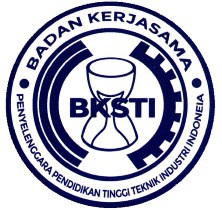Redesign User Interface Dengan Metode Design Thinking: Studi Kasus
DOI:
https://doi.org/10.52759/inventory.v4i2.138Keywords:
Design Thinking, Redesign, User Interface, WebsiteAbstract
Transformation of production and service processes is a form of change in the industrial revolution era that is supported by systems. One of the components in a company's information system is a web page or known as a website. User Interface in website design is a concern at the CV X company which operates in the interior contracting sector. This research aims to redesign the user interface to suit user needs on the CV X website using the design thinking method. The design thinking method has six stages, namely, empathize, define, ideate, prototype, test, and implement. This research carried out four of the six stages of design thinking. Several research results include a collection of companies' desires to change the layout, content and elements on the website, content regarding SVLK, the use of persuasive words, and navigation features in the website footer that are not yet available in the current design. Defining the problem at the define stage is the elimination of be spoke pages, the use of colors that match the characteristics of the company, the addition of interactive animations, and changes to all elements on the website. The results of collecting ideas at the ideate stage were 9 ideas. The realization of ideas at the prototype stage consists of 3 processes, namely the style guideline creation process, the redesign process, and a comparison of the current design with the redesign results. The process of creating a style guideline includes fonts, colors, button elements, website headers and footers. This research focuses on the website user interface only so that the test and implementation stages related to User Experience (UX) are not analyzed.
Downloads
References
A. Kristanto, Perancangan Sistem Informasi dan Aplikasinya, Edisi Revisi., vol. 1. Yogyakarta: Gava Media, 2018.
E. F. Harahap, S. Adisuwiryo, and R. Fitriana, Analisis dan Perancangan Sistem Informasi, Edisi Pertama. Jakarta: Wawasan Ilmu, 2022.
H. B. Bekti’, Mahir Membuat Website dengan Adobe Dreamweaver CS6, CSS, dan JQuery. Yogyakarta: Andi, 2015.
S. K. I. Putra, “Perancangan User Interface Website Sebagai Media Promosi Kirah Interior,” Universitas Sahid Surakarta, Surakarta, 2021.
T. C. Bragi, “Analisis dan Perancangan User Interface dan Front-End Company Profile Website pada Klinik Pribadi Dokter Gigi,” Universitas Dinamika, Surabaya, 2022.
A. A. Puji and V. Engraini, “Perancangan User Interface Website E-Commerce Pada Usaha Kuliner Menggunakan User Centered Design,” Jurnal CoSciTech (Computer Science and Information Technology), vol. 2, no. 1, pp. 1–8, Jun. 2021, doi: 10.37859/coscitech.v2i1.2196.
R. A. Sari, “Cara Mengukur Keberhasilan Promosi Digital, Begini Indikatornya!,” Mashmoshem Indonesia. Accessed: Aug. 23, 2023. [Online]. Available: https://mashmoshem.co.id/cara mengukur- keberhasilan-promosi digital/#Website_Engagement
W. Marta, “Redesign Website SMK SMTI Padang,” Judikatif: Jurnal Desain Komunikasi Kreatif, vol. 1, pp. 29–34, Dec. 2019, Accessed: Aug. 23, 2023. [Online]. DOI: http://dx.doi.org/10.35134/judikatif.v131.1
D. Kelley and T. Brown, “An Introduction to Design Thinking,” Institute of Design at Stanford, 2018, doi: 2604/a000142. 94 Utami and Setyawan https://doi.org/10.1027/2151-2604/a000142.
S. Nurrohmah and R. Andrian, “Mendesain Ulang Tampilan UI Website Desa Sukamukti Menggunakan Metode Design Thinking,” Jurnal Teknologi dan Informasi, vol. 13, Mar. 2023, doi: 10.34010/jati.v13i1.
E. C. Shirvanadi, “Perancangan Ulang UI/UX Situs E- Learning Amikom Center dengan Metode Design Thinking (Studi Kasus: Amikom Center),” Universitas Islam Indonesia, Yogyakarta, 2021.
K. Hasna, M. Defriani, and M. Hafid Totohendarto, “Redesign User Interface Dan User Experience Pada Website Eclinic Menggunakan Metode Design Thinking,” vol. 4, no. 1, 2023, doi:https://doi.org/10.30865/klik.v4i1.1072
R. Yulia, R. M. Candra, M. Irsyad, and T. Darmizal, “UI/UX Redesign of INHIL Dukcapil Application Using the Design Thinking Method,” Jurnal Infokum, vol. 10, no. 5, pp. 481–488, 2020, [Online]. Available: http://infor.seaninstitute.org/index.php/infokum/ind ex
F. Juansyah and Dwi Rosa Indah, “Application of Design Thinking Method in Redesigning the Ui/Ux of Simak (Academic Information System) of Sriwijaya University Based on a Mobile Platform,” Jurnal Teknologi Informasi Universitas Lambung Mangkurat (JTIULM), vol. 8, no. 1, pp. 61 72, 2023, doi: 10.20527/jtiulm.v8i1.157.
S. Gibbons, “Design Thinking 101,” Nielsen Norman Group. Accessed: Sep. 05, 2023. [Online]. Available: https://www.nngroup.com/articles/design-thinking/




